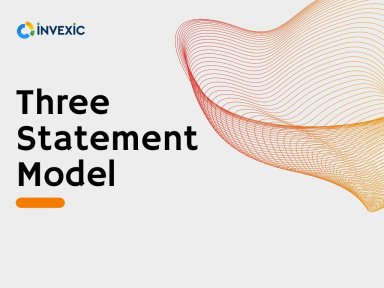
Originally published: 20/12/2022 10:05
Publication number: ELQ-74773-1
View all versions & Certificate
Publication number: ELQ-74773-1
View all versions & Certificate

Three Statement Model
Three Statement Model
Our mission is to be a top professional services firm by adhering to our core values which is integrity, objectivity, professional competence, development and maintenance of technical expertise and coFollow
Description
The purpose of a 3-statement model (i.e. an integrated financial statement model) is to forecast or project the financial position of a company as a whole. It contains the three types of financial statements – balance sheet, income, and cash flow statement – which are linked together.
Input the historical data: start with inputting historical or actual data for the income statement and balance sheet
Calculate ratios and statistics decide on forecast assumptions: from the historical data, calculate the ratios and statistics
Decide on forecast assumptions: Use the calculated statistics to create assumptions into the future i.e. sales may go up by 5% in the future in the forecast period
Build forecast income statement except for interest: we now have everything we require to actually start building the forecast figures and we start by building the income statement – which will include the sales going up by 5%
Build the forecast balance sheet except for cash, revolver, and debt: after building the forecast income statement, we then build the forecast balance sheet and we skip a couple of lines – cash, revolver, and debt – to do at the end of the modeling
Build the cash flow statement using the rules of cash: after building the forecast balance sheet in the previous stage, we build the cash flow statement using the rules of cash
Plug cash into the balance sheet from the cash flow statement: the only line items that have not been filled in are all interest-related. We know that cash, revolver, and debt all involve interest expense or interest income. We can take cash from the cash flow statement and put that into the balance sheet and thus one of the missing items is dealt with
Build debt and interest calculations: after the aforesaid step is completed, we build the debt and interest calculations. We can plug the revolver and long-term debt into the balance sheet. So now, the balance sheet is done
Balance the balance sheet: If we plug in all of these interest-related items, other figures are going to change. The balance sheet, which is completed, will change the cash flow statement – which will then change the cash number on the balance sheet. So, the balance sheet should balance. Having stated the above, note that the only item now missing is, interest. Plug the revolver and long-term debt into the balance sheet
Circular references: So, now we need to link the interest into the income statement and deal with any circular reference that may arise. The interest will lead to some changes in the net income, which will, in turn, affect the cash flow statement and cash on the balance sheet. Assuming we built our model correctly, this should all balance out
The purpose of a 3-statement model (i.e. an integrated financial statement model) is to forecast or project the financial position of a company as a whole. It contains the three types of financial statements – balance sheet, income, and cash flow statement – which are linked together.
Input the historical data: start with inputting historical or actual data for the income statement and balance sheet
Calculate ratios and statistics decide on forecast assumptions: from the historical data, calculate the ratios and statistics
Decide on forecast assumptions: Use the calculated statistics to create assumptions into the future i.e. sales may go up by 5% in the future in the forecast period
Build forecast income statement except for interest: we now have everything we require to actually start building the forecast figures and we start by building the income statement – which will include the sales going up by 5%
Build the forecast balance sheet except for cash, revolver, and debt: after building the forecast income statement, we then build the forecast balance sheet and we skip a couple of lines – cash, revolver, and debt – to do at the end of the modeling
Build the cash flow statement using the rules of cash: after building the forecast balance sheet in the previous stage, we build the cash flow statement using the rules of cash
Plug cash into the balance sheet from the cash flow statement: the only line items that have not been filled in are all interest-related. We know that cash, revolver, and debt all involve interest expense or interest income. We can take cash from the cash flow statement and put that into the balance sheet and thus one of the missing items is dealt with
Build debt and interest calculations: after the aforesaid step is completed, we build the debt and interest calculations. We can plug the revolver and long-term debt into the balance sheet. So now, the balance sheet is done
Balance the balance sheet: If we plug in all of these interest-related items, other figures are going to change. The balance sheet, which is completed, will change the cash flow statement – which will then change the cash number on the balance sheet. So, the balance sheet should balance. Having stated the above, note that the only item now missing is, interest. Plug the revolver and long-term debt into the balance sheet
Circular references: So, now we need to link the interest into the income statement and deal with any circular reference that may arise. The interest will lead to some changes in the net income, which will, in turn, affect the cash flow statement and cash on the balance sheet. Assuming we built our model correctly, this should all balance out
This Best Practice includes
Excel Sheet




